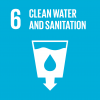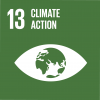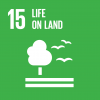Groundwater is a critical resource for drinking water, agriculture, and industry. With increasing anthropogenic activities and exponentially increasing population, groundwater in India is facing several challenges, related to quality as well as quantity, due to over-extraction, pollution, and climate change. Over-exploitation of groundwater may impact the availability and quality of groundwater which is not sustainable. Moreover, due to pollution in surface water, groundwater quality is also affected. In most of the cities of India, the quality of groundwater is below standard. Remote sensing and artificial intelligence can play a very vital role in monitoring the quantity as well as quality of groundwater. As, it is clear that presently no remote sensors can directly be used for groundwater observations, but by using surface features anomalies and gravity data obtained by various satellites, optimal groundwater management can be done using remote sensing.
Space4water is one of the best communities addressing water related issues and work towards sustainable solutions. For the last three years, I am following this community, and I find that the community consists of scientists, NGO, policy makers etc. This combination has the potential to resolve issues related to any challenges related to social issues. I am looking for few global research partners who work for groundwater management using space technology. I am equally looking for data driven resource persons who can collaborate with me on real field conditions of various countries, related to groundwater management.
What has been done so far is listed below:
- Worked on GRACE satellite data and used it in field condition to study groundwater anomalies of few cities of India.
- Developed spatio-temporal maps of Standardized Groundwater Index (SGI).
- Worked on water quality of water bodies.
- Used various satellite data to map water spread areas of various water bodies.
- Worked on machine learning models to study in situ remediation of contaminated groundwater.
Has this problem been acknowledged in the past?
The problem of groundwater exploitation and contamination in India has been addressed by the government.
Can this challenge be solved using space technologies and data?
All the goals discussed above can be achieved using space technology.
Today, no remote sensors can directly monitor groundwater, a combination of surface features anomalies and gravity data obtained by various satellites, allows for optimal groundwater management. Example satellites for monitoring include: the Gravity Recovery and Climate Experiment (GRACE) and its Follow-On mission (GRACE-FO) to study groundwater fluctuations, Landsat, Moderate Resolution Imaging Spectroradiometer (MODIS) etc), groundwater management can be done using space technology.
I developed a Standardized Groundwater Index (SGI) for Bihar state of India which proved to be very important to understand the severity of groundwater problems in that region. The spatio-temporal variation of SGI using geographical information systems (see figure 1) was published in the peer reviewed Journal of the Geological Society of India (Kumar and Kumari, 2024).

If groundwater level data are available and anomalies identified, a groundwater scarcity map can be created, which can help reduce the impact of droughts. In this way, the GRACE and GRACE-FO help to map and study the severity of water scarcity.
The integration of GRACE and other satellite data such as Landsat, MODIS etc. can be used to understand groundwater drought and take necessary actions to manage groundwater resources.
The pictorial representation of the plan is shown in below diagram.

Expected timeframe to develop a solution
2-3 years
Potential consequences if no action happens
Groundwater is the biggest source of freshwater in Asian countries, especially in India. If groundwater exploitation and contamination will not be addressed, it will impact food production and security, drinking water quality will deteriorate and other living organisms will suffer a lot. Health issues will increase.
What are additional physical requirements for a solution?
Remote sensing data, computational equipment, physical data collection on groundwater quality and quantity for ground truthing.
Groundwater exploitation needs to be monitored. This can be achieved using hybrid models relying on artificial intelligence and remote sensing data.
Presently, no satellite can monitor the groundwater quality directly. But groundwater pollution in itself is not an independent event; groundwater contamination depends on surface features, for example, a contaminated water body. Similarly, a large population numbers or land use, land cover changes will also impact groundwater pollution.
Groundwater pollution can be simulated using mathematical modelling and machine learning techniques. The surface variables can be collected using space technology and ground-based measurements.
The results can be represented in a mobile application for early warning, industrial regulation, public health protection, etc. as displayed in the above figure presents the same idea.










